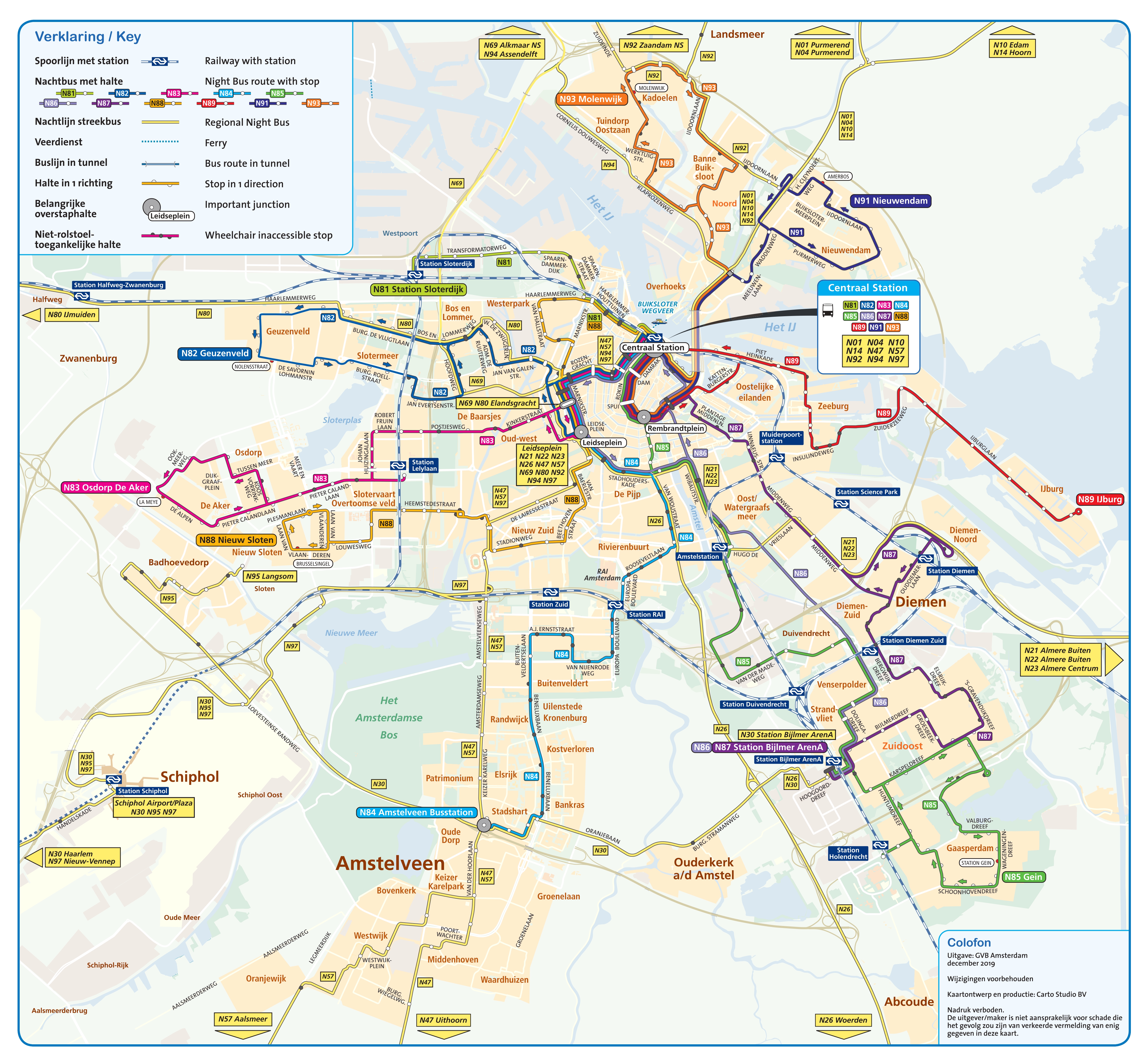Proper and reliable night transit is essential for Amsterdam due to its extensive cultural, touristic and of course, large studying facilities. Night transit ensures a safe trip back home, especially when you live a little further away from the city centre. This allows cultural destinations, parties or social events to remain accessible during the night as well. This is important for students who do not feel comfortable cycling back home in the middle of the night.
TIPS for using night transit in Amsterdam:
- Please purchase a night bus ticket on time, using your “OV-Chipkaart” (Public Transport Card). This will help you to avoid € 3,61 transfer costs in case you have to switch busses. This ticket can also be purchased online.
- Several transportation companies, such as GVB and Connexxion, sell multiple night rides at once, which makes the overall cost of a single night ride way cheaper. These can be charged onto your Public Transport Card.
- Take a close look at departure times, since many buses only run once an hour.
- In the larger hubs (such as at the stop Leidseplein), bus stop location often differs from the ones at daytime. Please look up where the exact bus stop of your night bus line is located during the night.

A map of the Amsterdam night network
Reasons for proper night transit in Amsterdam
- Social Safety: Night buses are a comfortable alternative for biking back home on your own.
- Amsterdam, City of Culture: Amsterdam hosts many activities that end (way) past midnight, yet with limited transit service at night.
- Accessibility of student housing: more and more student residences or complexes are being built outside the city’s core within the A10 circular core. Reliable and safe access to the city centre is, therefore, a legitimate prerequisite to make “student housing at a distance” succeed.
Issues regarding Amsterdam’s night transit
GVB, Amsterdam’s public transport carrier has continuously failed at prioritising a reliable and affordable night transit throughout the past years. Its main issues are:
- Amsterdam nocturnal network has 11 lines, which isn’t much for a city giving shelter to more than 800,000 inhabitants and expanding. This small number of lines often leads to long and complex trajectories with many stops, meaning travel times are considerably longer than in the daytime. Besides, one single bus an hour regularly implies long transfer times.
- In 2020, night fares have been raised to € 4,70 valid up to 90 minutes, no matter the distance. This price is relatively high compared to regular bus transit, strongly undermining public transport accessibility for students.
- The small number of bus lines often forces passengers to transfer when using night buses. However, the GVB adds a € 3,61 transfer fee unless you’ve purchased a night bus ticket beforehand, adding up to € 8 for a single bus ride.
- Another consequence of the small number of lines, are ‘holes’ within the network, making some areas particularly difficult to reach after a certain hour. This is the case for Amsterdam Science Park for example.
ASVA and the Consultative Council for Passengers (RAR)
Hence, there is much room for improvement in Amsterdam’s night transit. In 2019 for example, ASVA has tried to provide constructive yet urgent recommendations at the address of the GVB to increase night bus frequency and lower the prices. In upcoming years, ASVA will try to continuously improve night transit in the region together with the RAR!
